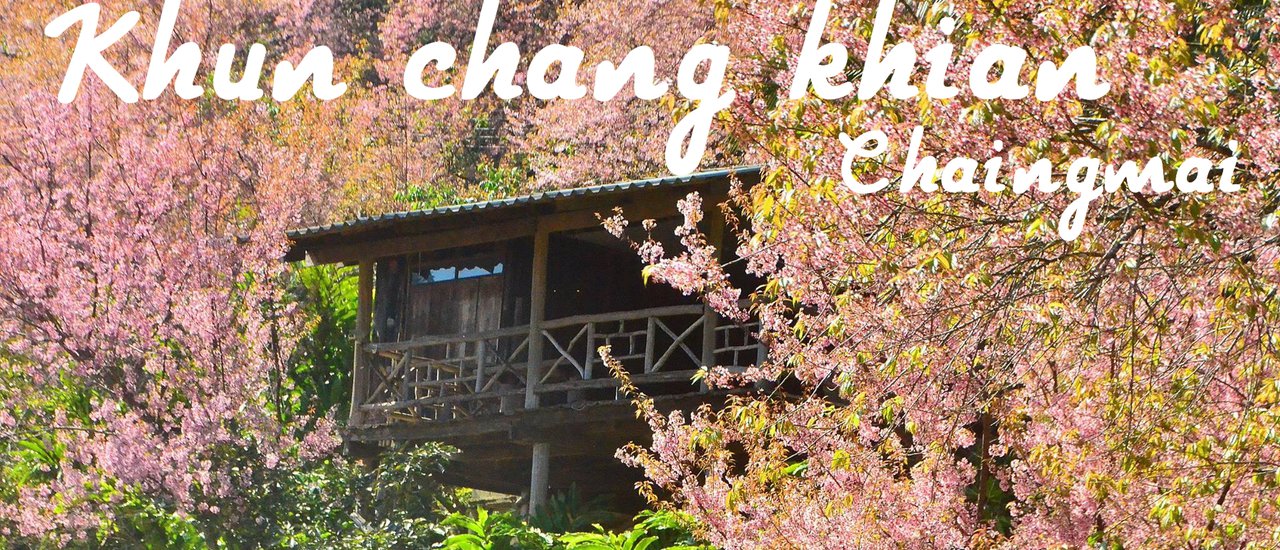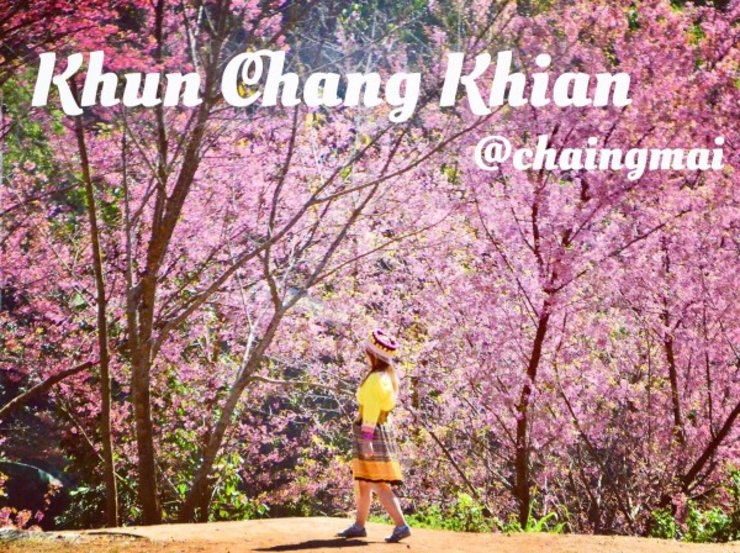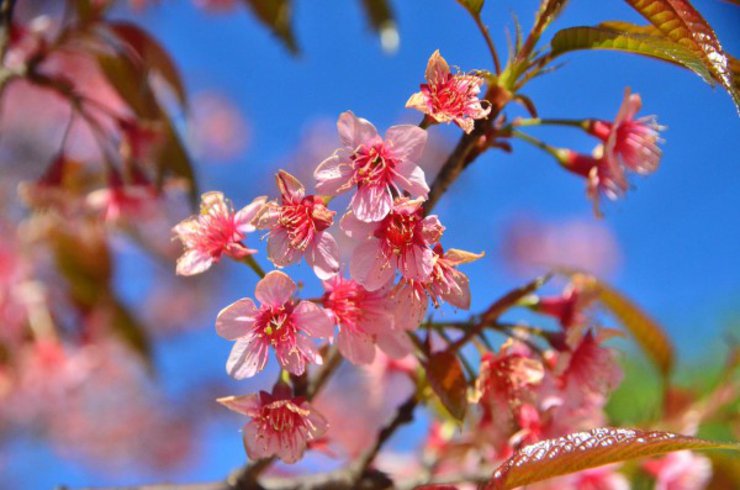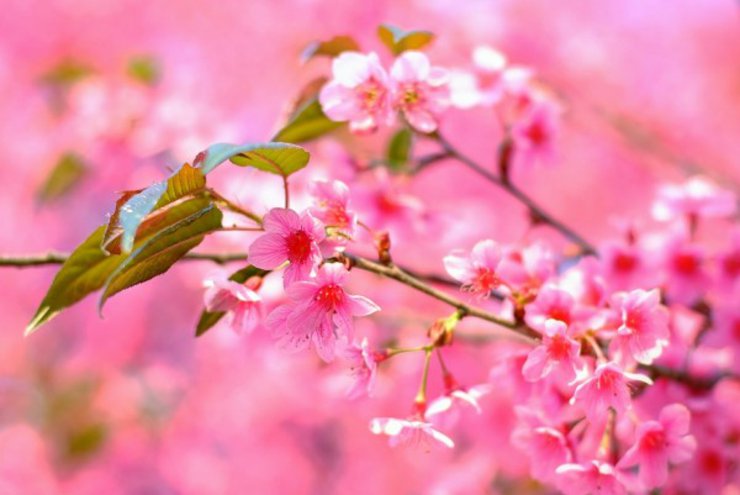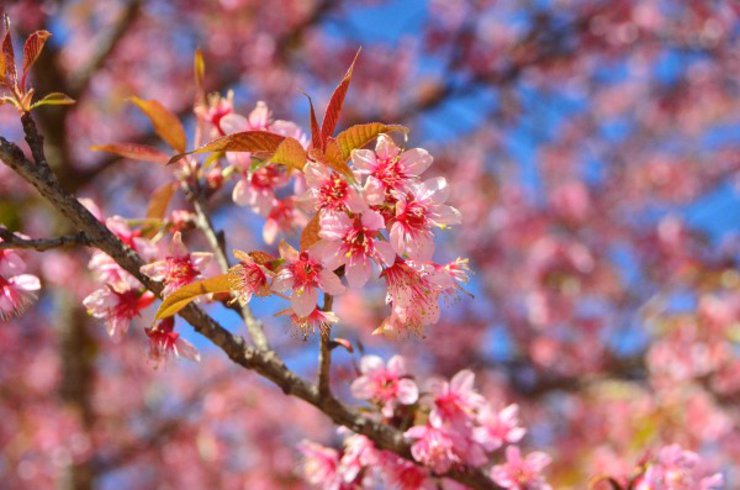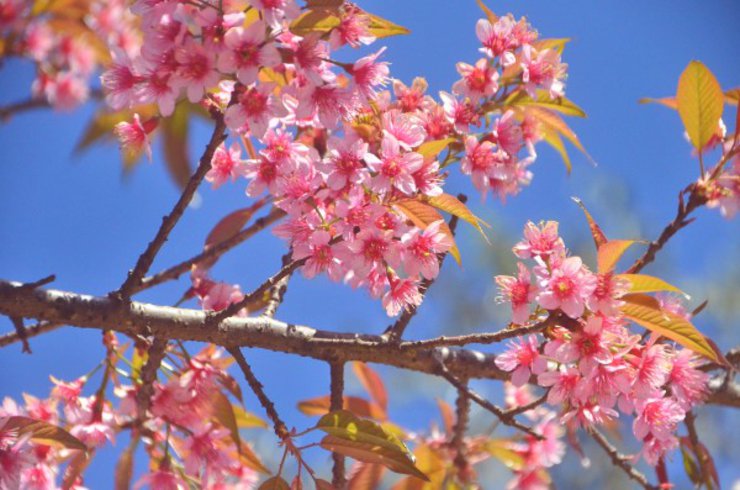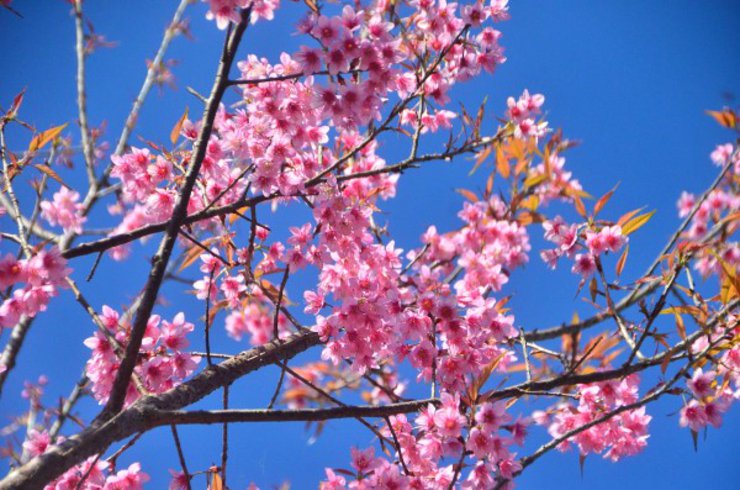
Let's visit the "Thai Sakura" or "Wild Himalayan Cherry" at Khun Chang Kian, Chiang Mai.
With the recent surge in photos of the Queen's Flower, I was overcome with a strong desire to see it in person. Taking advantage of the weekend break (January 20-21, 2018), I packed my backpack and boarded a train to Chiang Mai.

The train fare is only 227 baht, but it's a third-class seat, so it's a bit hard to sit on. But I really wanted to travel, so I had to settle for it. Because if I had booked a plane ticket that day, it would have been too expensive.
Upon arrival, rent a motorbike and head straight up. The route is the same as the one to Doi Suthep, but continue straight past the Hmong village of Doi Pui. There will be a sign to turn right to Ban Chang Khian. This is the view along the way.

Wild Himalayan Cherry (Prunus cerasoides)
The Wild Himalayan Cherry (Prunus cerasoides), also known as Nang Phaya Sua Kroeng in Thai, is a flowering plant belonging to the genus Prunus. It blooms between January and February and is commonly found in mountainous regions at elevations ranging from 1,200 to 2,400 meters above sea level.
This species is native to northern Thailand and can be found in various locations, including:
- Phu Lom Lo, Loei Province
- Doi Mae Salong, Chiang Rai Province
- Doi Wiang Haeng, Doi Ang Khang, Khun Chang Kian, Khun Mae Ya, Chiang Mai Province
- Khun Sathan, Doi Wao, Doi Phu Kha, Mani Phrueksa, Nan Province
- Phu Thap Boek, Phetchabun Province
- Phu Hin Rong Kla, Phitsanulok Province
The Wild Himalayan Cherry is the official flower of Wiang Haeng district.
International Distribution:
- Myanmar: Shan State and Kachin State
- India: Himalayas, Arunachal Pradesh, and Himachal Pradesh
- Bhutan
- Nepal
- China: Yunnan Province
Pink trumpet trees are often called "Thai sakura" because they resemble Japanese cherry blossoms, even though they are different species.

A Scenic Escape: Exploring Khun Chang Kian, a Haven for Coffee, Blossoms, and Mountain Life
Nestled amidst the mountainous terrain of Chiang Mai, Khun Chang Kian, a research station and agricultural training center, offers a captivating blend of nature's beauty and scientific exploration. Situated along the same route as the revered Doi Suthep temple, the royal Phuping Palace, and the captivating Hmong village of Doi Pui, Khun Chang Kian stands as a testament to the university's dedication to agricultural research.
As a research station under the Faculty of Agriculture at Chiang Mai University, Khun Chang Kian delves into the world of coffee beans, temperate fruits like plums, persimmons, avocados, and macadamia nuts, and subtropical fruits such as lychees. This diverse array of research reflects the station's commitment to fostering sustainable agricultural practices in the region.
However, Khun Chang Kian's allure extends beyond its scientific endeavors. Every winter, from late December to January, the station transforms into a breathtaking spectacle of pink hues. The blooming of the "nang phaya sua krong" trees, often referred to as Thailand's cherry blossoms, paints the landscape with a vibrant tapestry of color. These vibrant blossoms adorn not only the research station but also the surrounding Hmong village, creating a picturesque scene that draws visitors from far and wide.
However, the capricious nature of the weather necessitates a call to confirm the blooming period before embarking on a journey to witness this natural wonder. Despite the potential for variability, the sight of the pink blossoms cascading across the mountains remains a captivating experience, offering a glimpse into the harmonious coexistence of nature and human endeavors at Khun Chang Kian.





The photo of the flowers against the sky is so vibrant.
Beyond the agricultural station is the Ban Chang Khian village. Inside, there are beautiful Dok Ngang Phaya Sua Krong flowers for taking pictures.






The village offers traditional hill tribe clothing for rent at only 50 baht.

Seeing other people wearing it for photos, we couldn't resist renting one to try it on ourselves. 555



Upon transforming into a Hmong girl, I immediately started taking photos. I felt bad for my boyfriend, I took thousands of photos. 555





Many people come to take photos at the Kaset Station.



The Agricultural Station area will also have items for sale. You can sit and enjoy them all day long.


Children are taking on photography jobs, which should be quite profitable during this period due to the high demand for their services.



This is a girl from the mountains. You can take photos with her, and she won't charge you.
This picture, if the mountains were pointed, would look like it was taken in Japan. Haha.







Lost in the joy of taking photos! If you have any beautiful pictures, please share them with us.




See you again next year. Bye bye.
หนีward มากอดฝัน
Monday, November 11, 2024 9:56 AM

